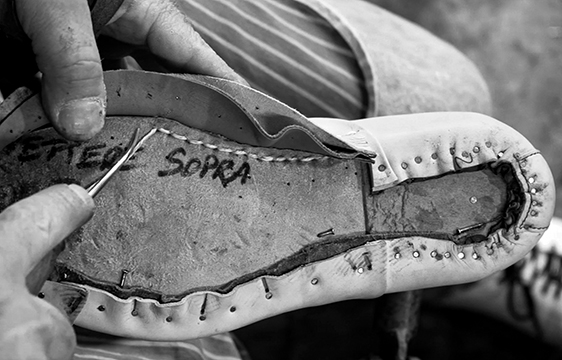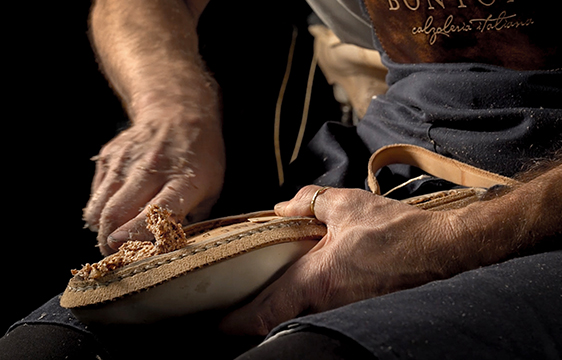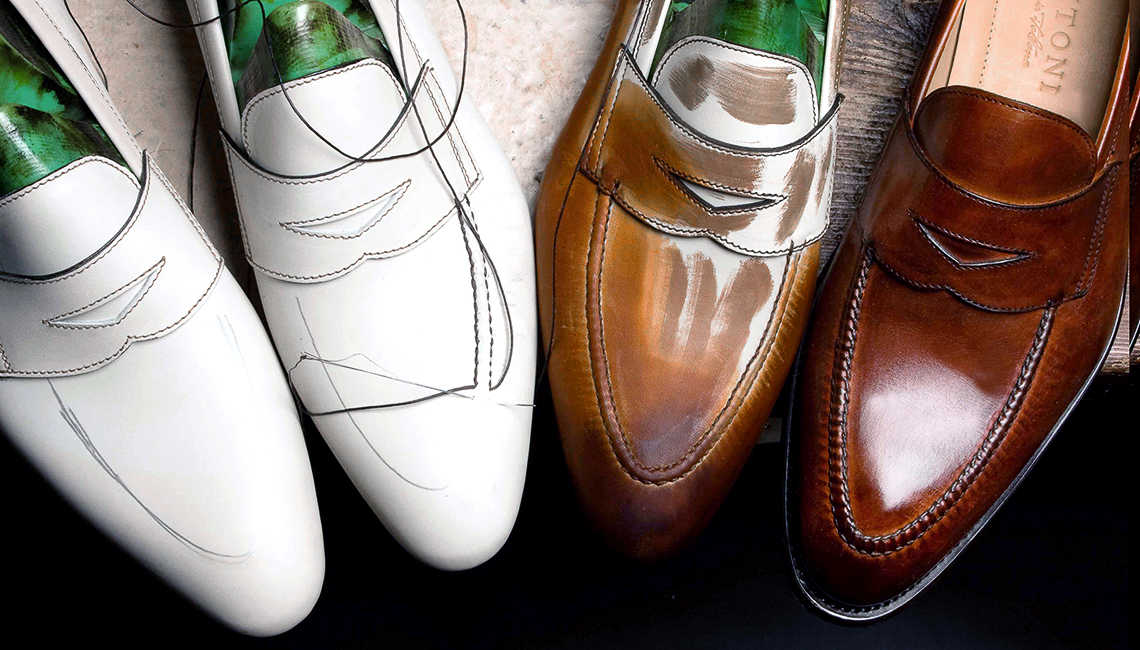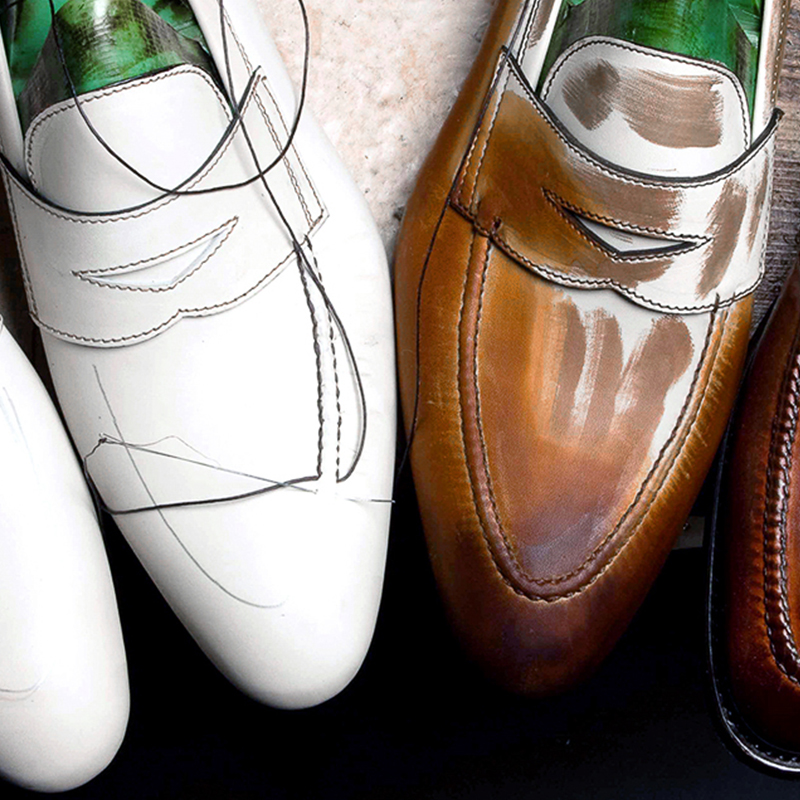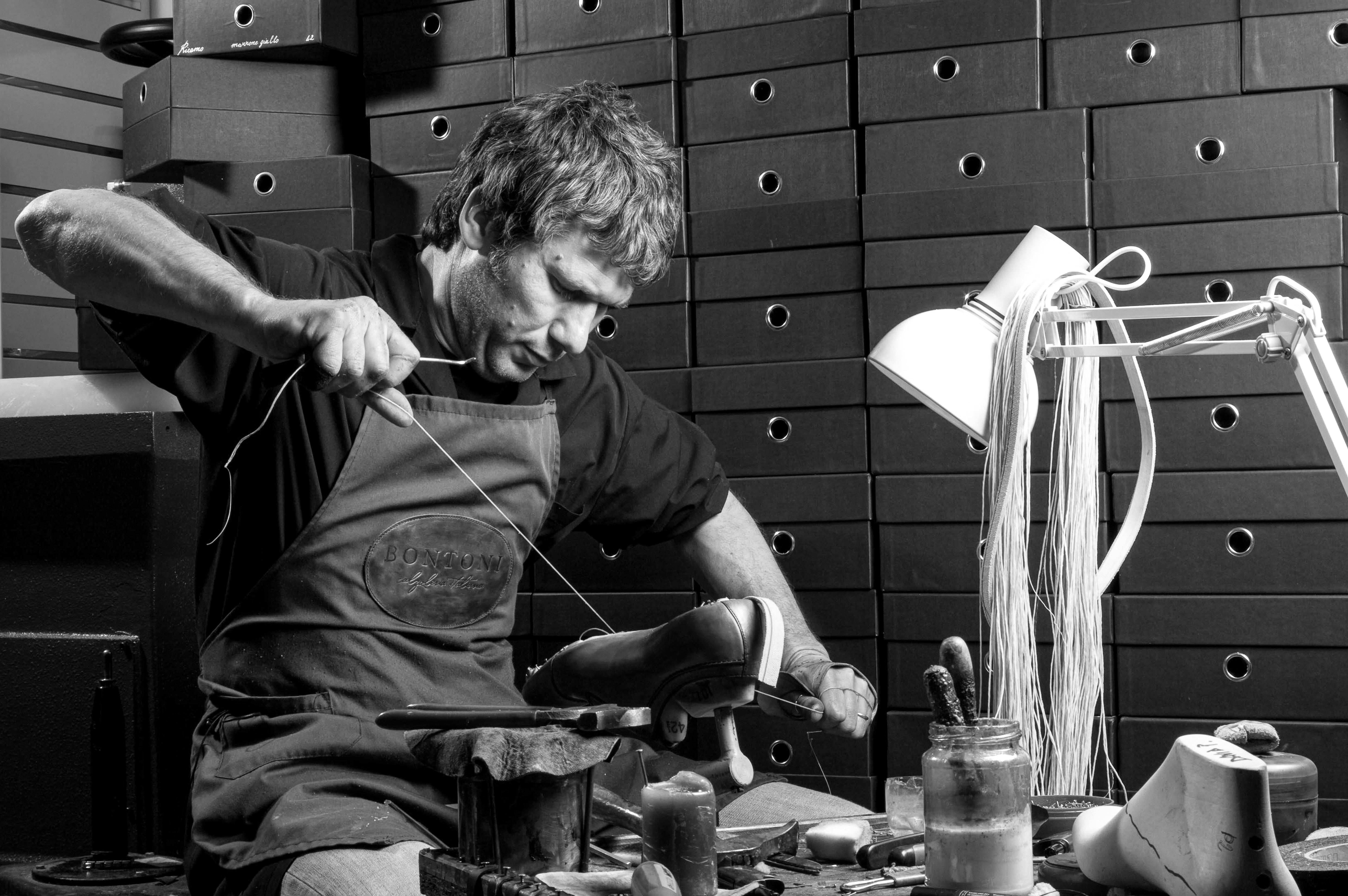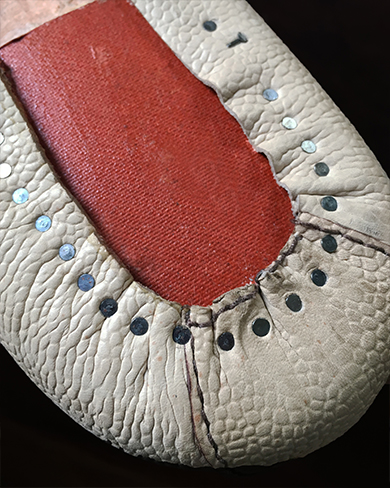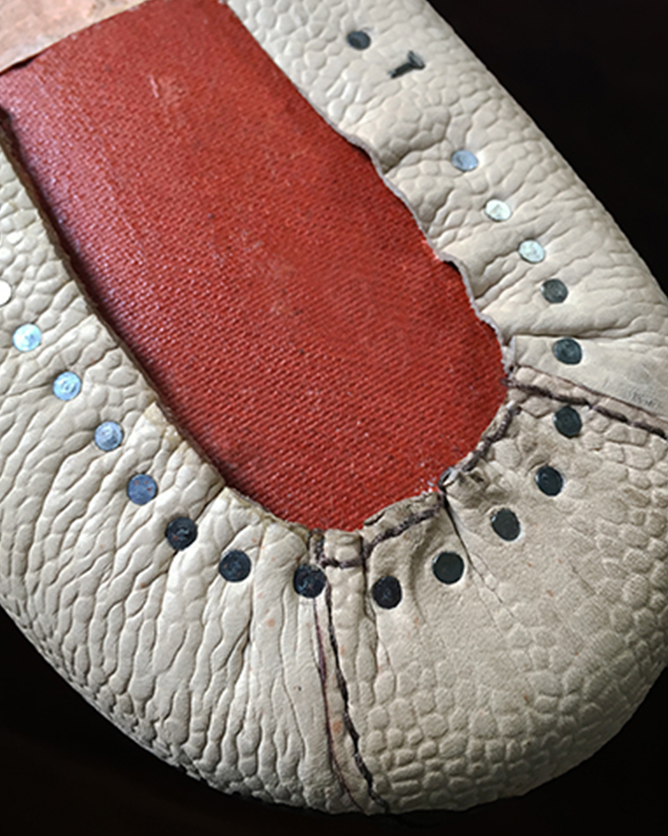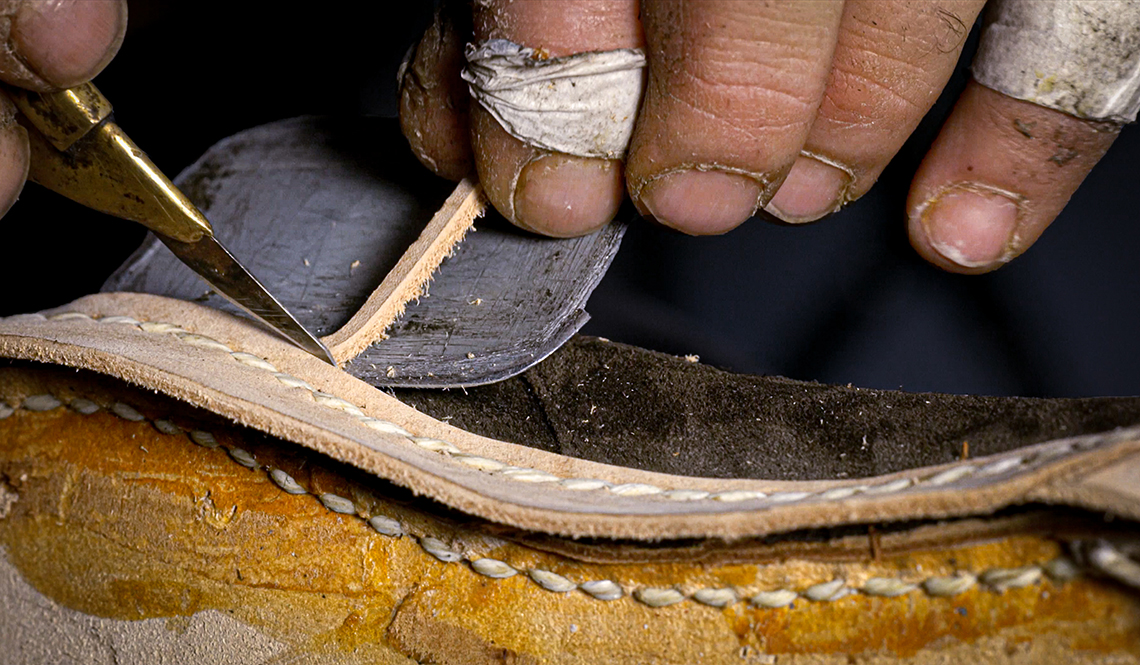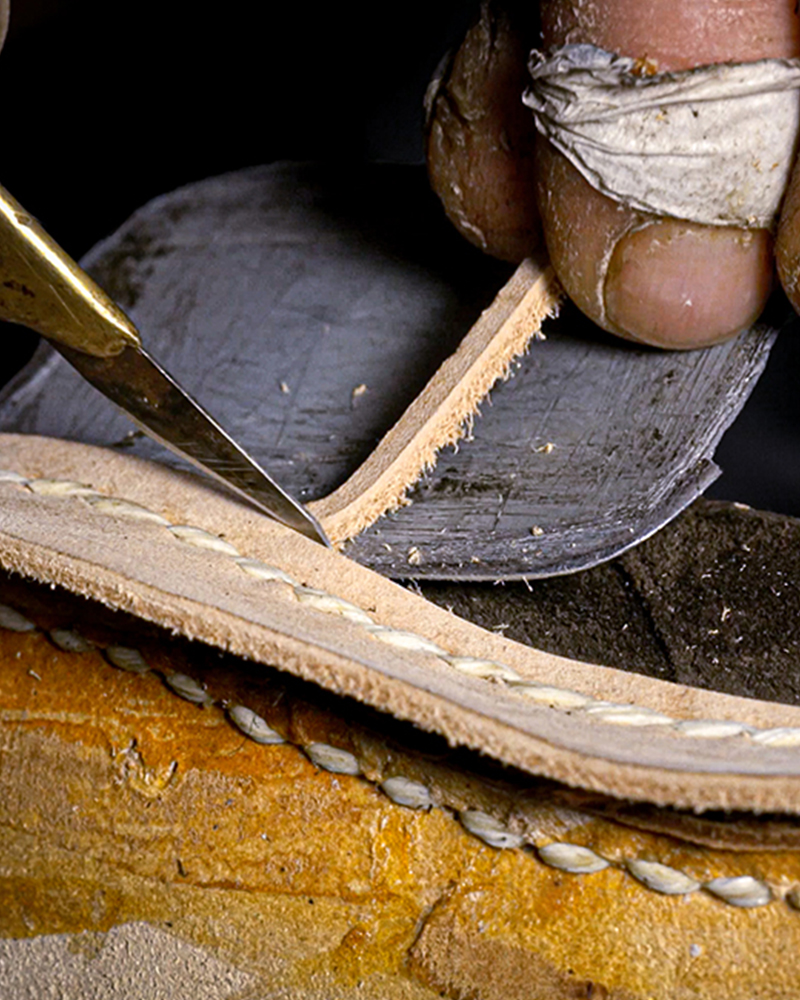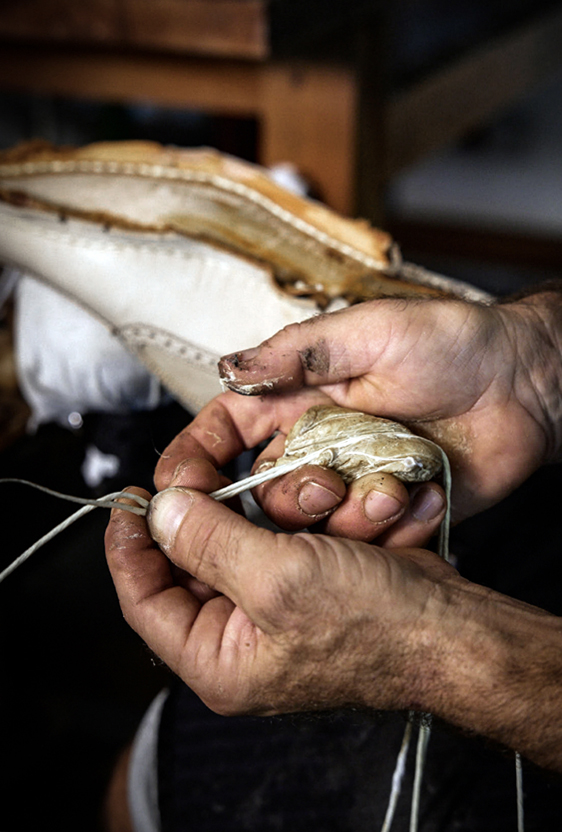
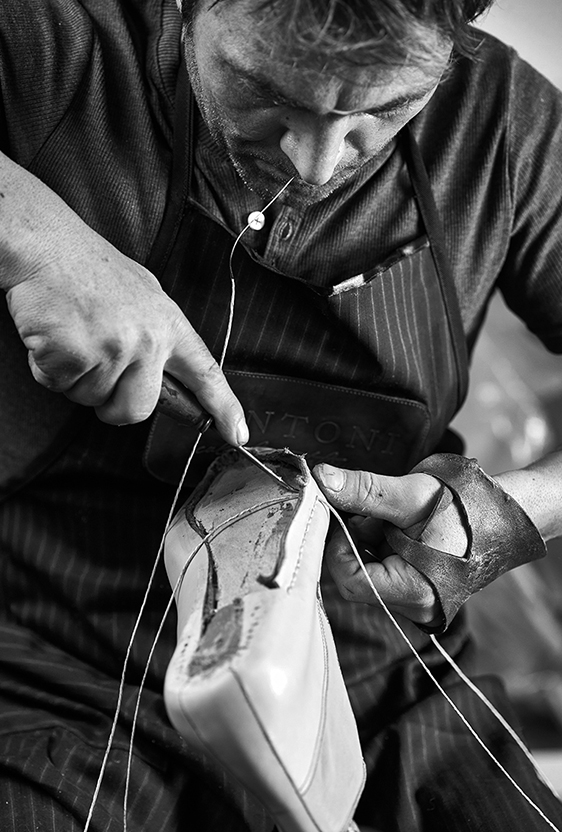
EXPERTLY CRAFTED
Hundreds of manual operations go into every pair of our shoes. It takes a Bontoni “calzolaio”, or shoemaker, years to master each of the different phases that bring a shoe to life.
The craftsmen who have made each pair of Bontonis are not just about shoes. They come from long lines of Italian craftsmen and artists who made everything from dresses to violins. Bruno, who was our last maker, did more than that. He also made ornate violins by hand in our bottega. This is the Italian bottega as it has been for hundreds of years—a sanctuary for creative and passionate craftsmen. This legacy of artistry continues to resonate in each of the hundreds of distinct steps that go into every pair of Bontoni shoes.
It takes a Bontoni calzolaio, or shoemaker, years to master the different phases that bring a Bontoni shoe to life; precisely cutting the leather, hand sewing the seams, and attaching the welt. First, before shoe construction can begin, the leather is precisely cut into patterns to create a given model. The pieces are sewn together and reinforced with a lining and stiffeners to create the upper. In order
for the upper to take on the elegant shape of the last, the calzolaio painstakingly pulls every centimeter of the upper over the last using a pair of pliers. The upper is then nailed in place along the perimeter of the insole.
In between nailing, the calzolaio uses a warm hammer head to compress the upper’s leather fibers to ensure a perfect contour. Next, he pierces the upper, welt, and insole with an awl. Two hand-twisted wax threads enter each hole from opposite sides. The threads are then forcefully pulled to create a lock stitch. After the welt, upper and insole rib have been attached with one stitch, the welt and the outsole are then attached with another stitch.
The craftsmen who have made each pair of Bontonis are not just about shoes. They come from long lines of Italian craftsmen and artists who made everything from dresses to violins. Bruno, who was our last maker, did more than that. He also made ornate violins by hand in our bottega. This is the Italian bottega as it has been for hundreds of years—a sanctuary for creative and passionate craftsmen. This legacy of artistry continues to resonate in each of the hundreds of distinct steps that go into every pair of Bontoni shoes.
It takes a Bontoni calzolaio, or shoemaker, years to master the different phases that bring a Bontoni shoe to life; precisely cutting the leather, hand sewing the seams, and attaching the welt. First, before shoe construction can begin, the leather is precisely cut into patterns to create a given model. The pieces are sewn together and reinforced with a lining and stiffeners to create the upper. In order for the upper to take on the elegant shape of the last, the calzolaio painstakingly pulls every centimeter of the upper over the last using a pair of pliers. The upper is then nailed in place along the perimeter of the insole.
In between nailing, the calzolaio uses a warm hammer head to compress the upper’s leather fibers to ensure a perfect contour. Next, he pierces the upper, welt, and insole with an awl. Two hand-twisted wax threads enter each hole from opposite sides. The threads are then forcefully pulled to create a lock stitch. After the welt, upper and insole rib have been attached with one stitch, the welt and the outsole are then attached with another stitch.
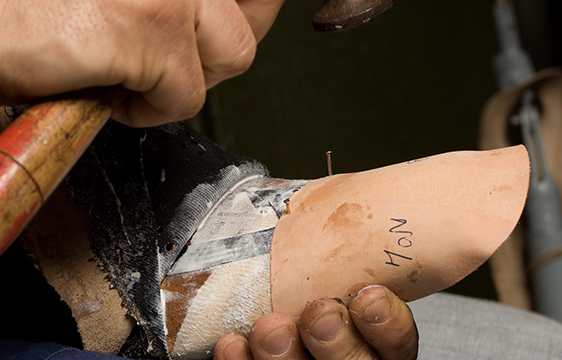
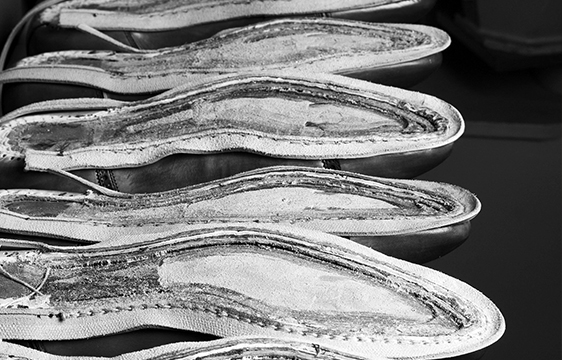
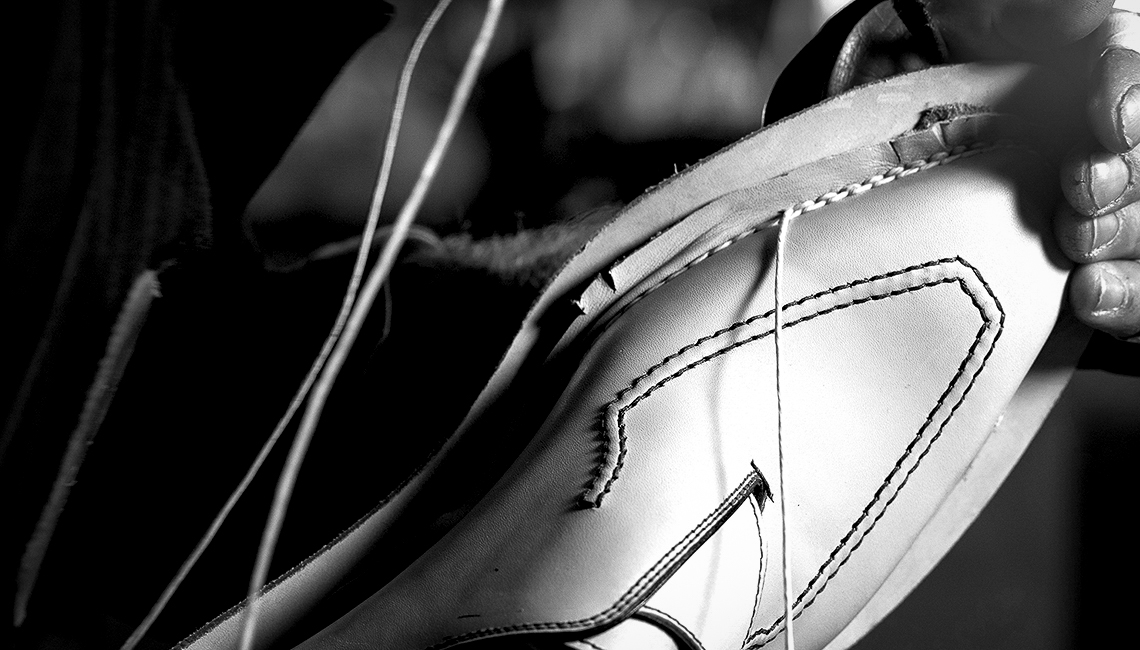
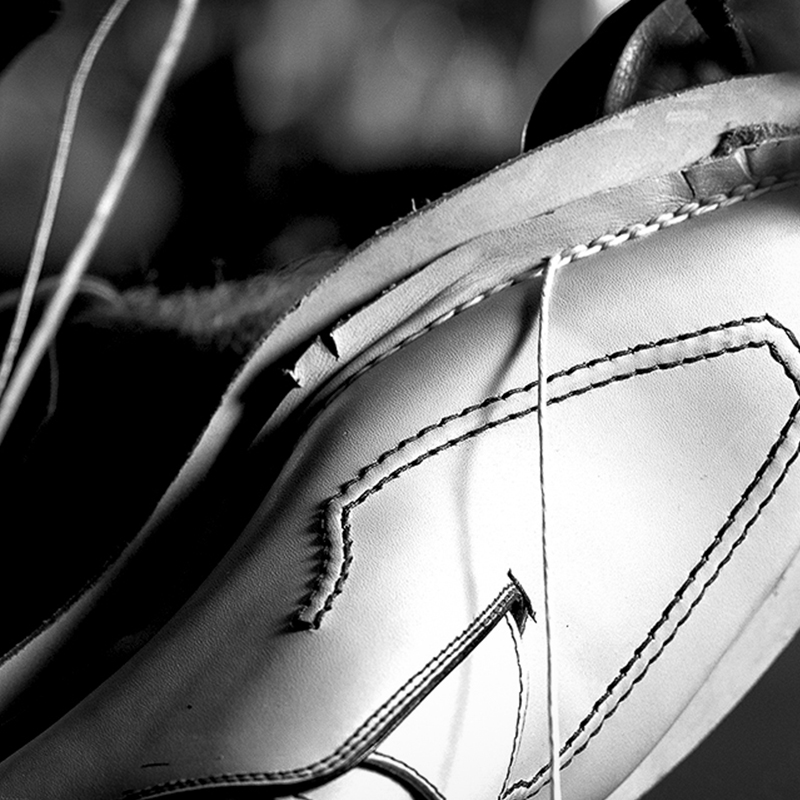
In addition to the traditional hand-welted method, Bontoni also offers shoes made using Norwegian, Goodyear, Blake Rapid, and Tubular constructions. Each of these techniques offers its own set of advantages in terms of comfort, flexibility, durability, and aesthetics. The craftsmen who have made each pair of Bontonis are not just about shoes.
Because we make our shoes entirely by hand, we can’t avoid paying attention to every detail. Our decorative reverse- and raised-stitched seams, for example, are sewn by hand. The characteristic linear markings of our hand-stitched seams are created by tightly drawing each thread one stitch at a time. It takes one of our skilled artisans over 90 minutes to complete a
single shoe apron seam. The end result is not only a seam that is stronger but also one that is striking and beautiful.
In addition to the traditional hand-welted method, Bontoni also offers shoes made using Norwegian, Goodyear, Blake Rapid, and Tubular constructions. Each of these techniques offers its own set of advantages in terms of comfort, flexibility, durability, and aesthetics. The craftsmen who have made each pair of Bontonis are not just about shoes. Because we make our shoes entirely by hand, we can’t avoid paying attention to every detail.
Our decorative reverse- and raised-stitched seams, for example, are sewn by hand. The characteristic linear markings of our hand-stitched seams are created by tightly drawing each thread one stitch at a time. It takes one of our skilled artisans over 90 minutes to complete a single shoe apron seam. The end result is not only a seam that is stronger but also one that is striking and beautiful.
